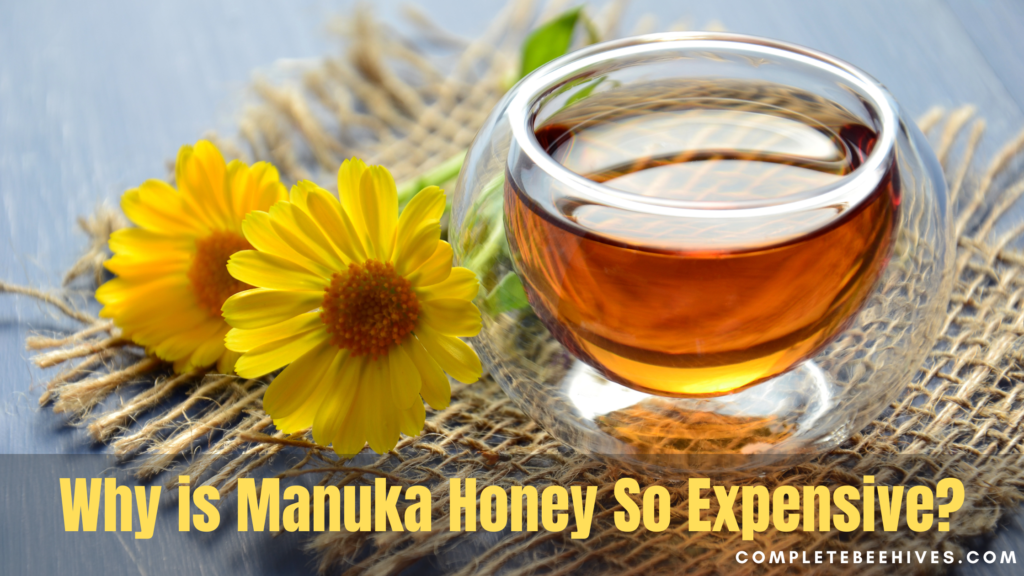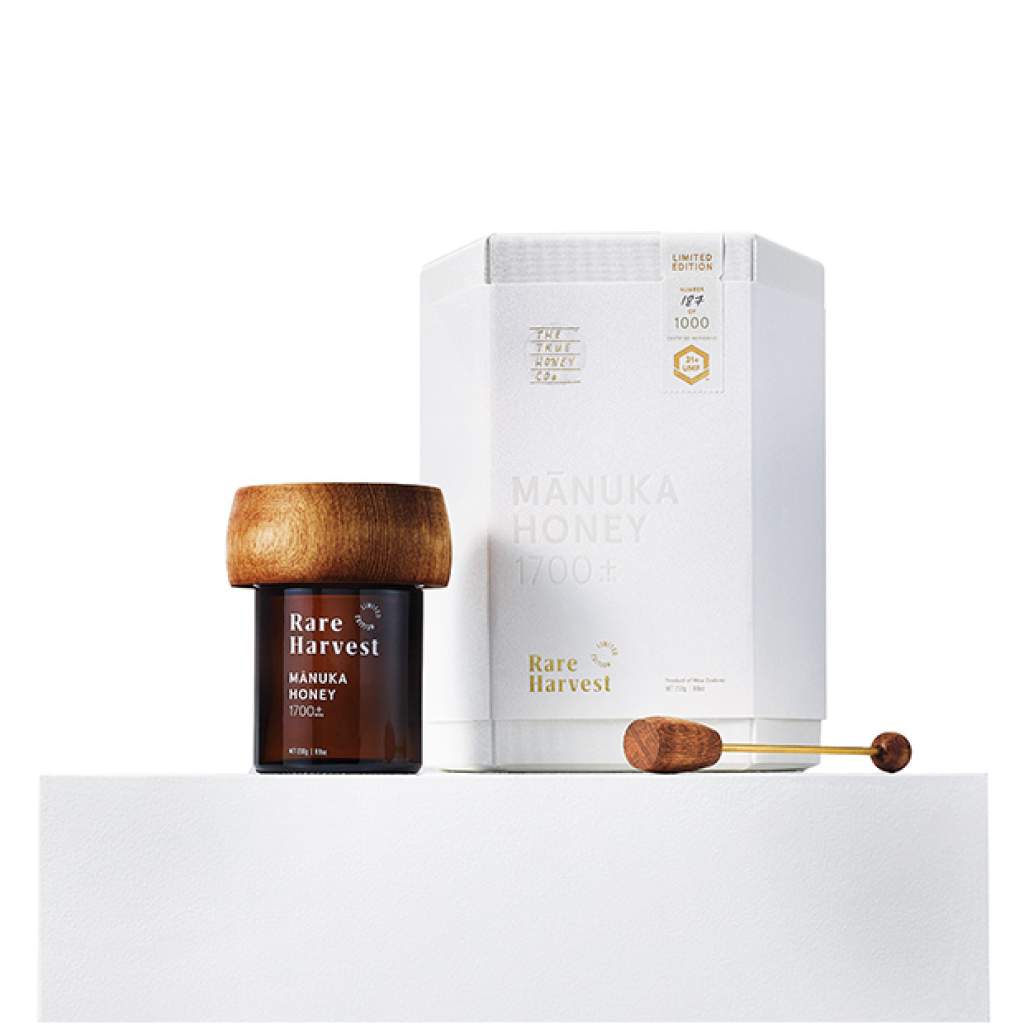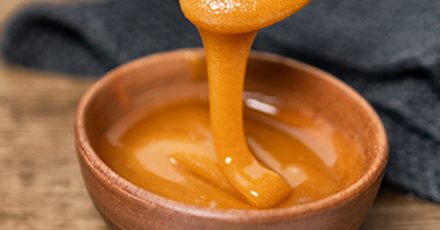
Have you ever wondered why manuka honey is more expensive than other types of honey? This golden and unique honey variety, derived from the nectar of the manuka bush native to New Zealand, has gained immense popularity in recent years. Its higher price tag can be attributed to several factors, such as its limited supply due to the specific conditions required for the manuka bush to thrive, its remarkable health benefits and medicinal properties, and the extensive process involved in harvesting and producing this extraordinary honey. In this article, we will explore the reasons behind the higher price of manuka honey and discover why it has become such a sought-after delicacy.
Quality Control and Certification
Stringent production standards
One of the reasons why manuka honey is more expensive is due to the stringent production standards that it must adhere to. The New Zealand government has implemented strict regulations to ensure the quality and authenticity of manuka honey. These regulations include guidelines on the production process, the sourcing of manuka flowers, and the collection and processing of the honey. These standards aim to maintain the integrity and purity of manuka honey, which contributes to its higher cost.
Testing for authenticity and potency
To guarantee the authenticity and potency of manuka honey, rigorous testing methods are employed. The Unique Manuka Factor (UMF) and the Methylglyoxal (MGO) rating systems are used to measure the antibacterial activity and bioactive compounds within the honey. Independent laboratories carry out these tests to verify the quality and grade of manuka honey. The testing process adds to the overall cost of production as it requires specialized equipment and expert analysis.
Costs of certification
obtaining certification for manuka honey adds to its price. In addition to meeting the production standards and undergoing testing, producers must also apply for certification from recognized regulatory bodies. These certification processes involve fees, inspections, and audits to ensure compliance with the necessary standards. The costs associated with certification contribute to the higher price of manuka honey, as these expenses are passed on to the consumer.
Limited Supply and Harvesting Challenges
Manuka tree growth constraints
The limited supply of manuka honey is due to the growth constraints of the manuka tree. Manuka trees (Leptospermum scoparium) are native to New Zealand and thrive in specific environmental conditions. They require well-drained soil, plenty of sunlight, and a specific temperature range to grow and produce nectar-rich flowers. The geographical and climatic limitations restrict the mass cultivation of manuka trees, resulting in a limited supply of the honey.
Seasonal availability
Manuka honey is predominantly produced during a specific flowering season. The manuka tree flowers for a short period each year, usually between October and February in the Southern Hemisphere. The seasonal availability of the flowers further restricts the production of manuka honey to a limited timeframe. Beekeepers must carefully time their harvest to maximize the yield, contributing to the exclusivity and higher price of the honey.
Time-consuming and labor-intensive harvesting process
Harvesting manuka honey is a time-consuming and labor-intensive process. Unlike traditional honey extraction, manuka honey requires additional steps to ensure its quality. The honey is extracted from the hive, carefully filtered to remove impurities, and stored in specialized containers. The process also involves separating the honey based on its UMF or MGO rating. These extra steps add to the production time and require more labor, which contributes to the higher cost of manuka honey.
Unique Medicinal Properties
Antibacterial potency
Manuka honey is renowned for its exceptional antibacterial potency. The presence of high levels of methylglyoxal (MGO) contributes to its unique antimicrobial properties. MGO is a naturally occurring compound found in manuka honey and is responsible for its ability to combat harmful bacteria. This potent antibacterial activity makes manuka honey a sought-after natural remedy for various health conditions, leading to its higher price.
Bioactive compounds
In addition to its antibacterial properties, manuka honey contains a range of bioactive compounds that contribute to its medicinal benefits. These compounds include phenols, flavonoids, and antioxidants, which have been shown to possess anti-inflammatory and antioxidant properties. The presence of these bioactive compounds enhances the therapeutic potential of manuka honey and justifies its higher cost compared to regular honey.
Unique therapeutic benefits
The unique combination of antibacterial potency and bioactive compounds gives manuka honey its distinct therapeutic benefits. It is commonly used to treat wounds, soothe sore throats, and support digestive health. The effectiveness of manuka honey as a natural remedy has been recognized in both traditional medicine and scientific research. The unique healing properties of manuka honey contribute to its higher price as consumers are willing to pay a premium for its exceptional health benefits.
Mānuka Monopoly and Trademark Issues
Market dominance of a few brands
The manuka honey industry is often criticized for the market dominance of a few well-known brands. This concentration of power creates a monopoly-like situation, limiting competition and influencing the price of manuka honey. The dominant brands can control the supply and pricing, contributing to the higher cost that consumers have to bear. Increasing competition and the entry of new players into the market could potentially help alleviate this issue and provide consumers with more affordable options.
Exclusivity of the term ‘manuka honey’
Another factor affecting the price of manuka honey is the exclusivity of the term ‘manuka.’ The New Zealand government has taken steps to protect the term, only allowing it to be used for honey produced from the manuka tree in New Zealand. This protection ensures that manuka honey is not diluted or counterfeited, but also creates a limited supply and monopolistic conditions in the market. As a result, only a select few brands are legally allowed to use the term ‘manuka honey,’ adding to its premium price.
Legal battles and trademark rights
Legal battles surrounding trademark rights have also impacted the price of manuka honey. Several disputes have arisen over the use and ownership of the term ‘manuka honey’ in different countries. These legal battles require substantial financial resources and can delay the entry of new producers into the market. The costs associated with trademark protection and legal proceedings ultimately contribute to the higher price of manuka honey.

Environmental Factors and Beekeeping Practices
Climate and environmental conditions
The unique environmental factors required for manuka tree growth also influence the price of manuka honey. Manuka trees thrive in specific regions of New Zealand with favorable climatic conditions. The establishment and maintenance of apiaries in these areas require careful consideration of the natural environment. The costs of securing suitable land and providing proper hive management, including transportation and monitoring, contribute to the overall production cost and subsequently impact the price of manuka honey.
Sustainable beekeeping practices
To ensure the sustainability of manuka honey production and the health of bee populations, sustainable beekeeping practices are essential. Beekeepers must adhere to strict guidelines to minimize environmental impact and promote the long-term viability of bee colonies. These practices include providing a diverse foraging landscape for bees, implementing proper hive management techniques, and ensuring responsible honey extraction methods. The commitment to sustainability adds to the cost of production but ensures the continued availability of high-quality manuka honey.
Maintaining healthy bee colonies
Maintaining healthy bee colonies is crucial for the production of high-quality honey. Beekeepers invest time and resources in disease management, pest control, and hive maintenance to ensure the strength and productivity of their colonies. These efforts include regular inspections, the use of organic treatments, and providing a suitable habitat for the bees. The costs associated with maintaining healthy bee colonies reflect in the price of manuka honey, as these practices are essential to producing a premium product.
Marketing and Packaging Costs
Branding and advertising expenses
Effective marketing and branding play a significant role in the higher price of manuka honey. Established brands invest substantial resources in advertising campaigns, product endorsements, and building brand awareness. The costs associated with marketing activities, such as print and online advertisements, sponsorships, and social media campaigns, add to the overall production cost. These expenses are then reflected in the price of manuka honey.
Premium packaging materials
Manuka honey is often packaged in premium materials to maintain its quality and appeal. High-quality glass jars or specialized packaging are used to protect the honey from light and external factors that may affect its potency and taste. These premium packaging materials incur higher costs compared to standard honey packaging. The choice of premium packaging ensures that the manuka honey retains its value and premium image, contributing to its higher price.
Product differentiation
To stand out in a competitive market, manuka honey producers often differentiate their products through various means. This includes highlighting specific UMF or MGO ratings, indicating the region or apiary where the honey was sourced, or emphasizing sustainable and ethical beekeeping practices. The additional efforts made to differentiate their product add to the overall cost of production, which is then passed on to the consumer through a higher price.

Higher Production Costs
Pollination costs
The costs associated with pollination contribute to the higher production costs of manuka honey. Beekeepers must transport their colonies to manuka tree plantations during the flowering season to ensure optimal pollination. This transportation involves logistical expenses, such as vehicle maintenance, fuel, and labor. Additionally, the beekeepers may need to provide supplementary feeding for the bees when manuka flowers are not available, adding to the overall cost of production.
Expensive equipment and technology
The production of manuka honey often requires specialized equipment and technology. This includes beehives, extraction machinery, filtering systems, and honey storage facilities. Investing in high-quality equipment ensures efficiency, helps maintain the quality of the honey, and enables proper processing. However, these specialized tools and technologies come at a higher cost, contributing to the overall production expenses and subsequently to the price of manuka honey.
Labor costs
The labor-intensive nature of manuka honey production leads to higher labor costs. Harvesting and processing manuka honey require skilled beekeepers who are knowledgeable about the specific requirements of manuka trees and honey extraction. Additionally, the time-consuming steps involved in filtering, grading, and packaging the honey require meticulous attention to detail. The expertise and labor required to produce manuka honey necessitate higher wages, which are reflected in the final price.
Global Demand and Export Challenges
Increasing demand and popularity
Global demand for manuka honey has been steadily increasing over the years due to its unique properties and health benefits. As more people become aware of its medicinal value, the demand for manuka honey continues to rise. This growing popularity drives up the price of manuka honey, as producers must meet the increasing demand within the constraints of limited supply and stringent certification processes.
Export restrictions and regulations
Exporting manuka honey to different countries comes with its own set of challenges. Some countries have imposed restrictions and regulations on the import of honey due to concerns over biosecurity and the spread of pests and diseases. Complying with these regulations requires additional paperwork, inspections, and laboratory testing, which increase the cost of export. The export challenges add to the price of manuka honey, especially for consumers outside of its main production regions.
Shipping and storage costs
Shipping and storing manuka honey also contribute to its higher price. Special care must be taken to protect the honey during transportation to prevent damage and maintain its quality. This may involve using temperature-controlled containers and additional packaging materials to ensure that the honey is not exposed to extreme temperatures or light. The costs of shipping and proper storage methods add to the overall production costs, which are ultimately passed on to the consumer.

Scientific Research and Development
Investment in research and development
The manuka honey industry invests significant resources in scientific research and development to better understand its unique properties and potential applications. Studies explore the antimicrobial activity, wound healing properties, and other therapeutic benefits of manuka honey. This investment helps validate and expand the scientific knowledge on manuka honey, driving its popularity and justifying its higher price.
Testing and trials
Alongside research and development, extensive testing and clinical trials are conducted to establish the efficacy and safety of manuka honey for various uses. These studies involve rigorous testing in controlled laboratory settings and clinical trials on humans. The costs associated with these testing procedures, including sourcing test subjects, acquiring the necessary permits, and employing qualified researchers, add to the overall production costs and contribute to the higher price of manuka honey.
Scientific collaborations
To further enhance scientific knowledge and promote the benefits of manuka honey, scientific collaborations are crucial. Collaboration between researchers, industry experts, and regulatory bodies allows for the exchange of information and expertise. Such collaborations contribute to the advancement of validations, guidelines, and standards within the manuka honey industry. While these collaborations are essential for the industry’s growth, they also add to the costs associated with research and development, ultimately impacting the price of manuka honey.
Competition from Counterfeit and Adulterated Products
Risks of counterfeit manuka honey
The high price and growing demand for manuka honey have led to an increase in counterfeit products in the market. Counterfeit manuka honey is often made by diluting or adulterating regular honey with cheaper alternatives. This poses a significant risk to consumers, as the counterfeit products may not possess the same unique qualities and medicinal benefits as genuine manuka honey. The need for strict quality control measures and testing adds to the production costs and subsequently affects the price of authentic manuka honey.
Fraudulent adulteration practices
Fraudulent practices, such as adulterating manuka honey with other substances, negatively impact its quality and authenticity. Adulteration techniques involve adding substances like corn syrup or other types of honey to dilute the manuka honey, reducing its quality and potency. To protect the integrity of manuka honey, extensive testing and quality control measures are implemented, requiring additional resources and costs. These preventative measures contribute to the higher price of authentic manuka honey.
Detection and prevention efforts
To combat the issue of counterfeit and adulterated manuka honey, industry organizations and regulatory bodies have implemented detection and prevention efforts. These efforts include the development of testing methods to identify adulterated honey, as well as educational initiatives to raise awareness among consumers. The costs associated with these detection and prevention measures are factored into the price of manuka honey, ensuring the authenticity and quality of the product.
In conclusion, the higher price of manuka honey is a result of various factors. Stringent production standards, limited supply, and harvesting challenges contribute to the exclusivity and labor-intensive nature of manuka honey production. The unique medicinal properties, Mānuka monopoly, environmental factors, and beekeeping practices further impact its price. Marketing and packaging costs, higher production costs, global demand, scientific research, and competition from counterfeit products all play a role in the premium price of manuka honey. Despite its cost, manuka honey remains a sought-after natural remedy due to its exceptional health benefits and therapeutic properties.
